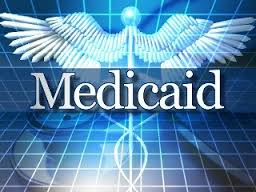| CLICK HERE and let us show how BHM’s economically maintain turn-around times and accuracy for these new members. |
 Possible opportunities for growth, for payers and providers connected with the Medicaid systems in eligible states, exist in the continually low enrollments in Medicaid Savings Programs. The Medicaid under-utilization group demographics emerged through a recently released report from Medicaid and CHIP Payment and Access Commission (MACPAC).
Possible opportunities for growth, for payers and providers connected with the Medicaid systems in eligible states, exist in the continually low enrollments in Medicaid Savings Programs. The Medicaid under-utilization group demographics emerged through a recently released report from Medicaid and CHIP Payment and Access Commission (MACPAC).
Under the Medicare Savings Programs (MSPs), state Medicaid programs are required to help pay for Medicare premiums and in some cases, Medicare cost sharing for low-income adults over age 65 and adults with disabilities (MACPAC 2013). In 2013, Medicaid paid for approximately 8.8 million beneficiaries to receive assistance with their Medicare costs through the MSPs (MACPAC 2015).
Historically, not everyone eligible for an MSP actually has enrolled. Low enrollment in the MSPs is of concern because cost-sharing assistance can affect access to care. Although payment policies are only one of several factors affecting access, prior work by MACPAC found as the Medicaid contribution towards Medicare cost sharing increases, beneficiaries are more likely to use selected outpatient services.
In this brief, MACPAC presents new data on MSP participation rates, updating prior studies that are now somewhat dated, with the most recent having been published in 2003.1
Using the most recently available data, their analysis shows participation in the MSPs continues to be low:
- 53 percent for the Qualified Medicare Beneficiary (QMB) program;
- 32 percent for the Specified Low-Income Medicare Beneficiary (SLMB) program; and
- 15 percent for the Qualifying Individual (QI) program.
Their analysis also seeks to gain insight into low enrollment, filling in gaps in the existing research by comparing characteristics of MSP enrollees with those eligible but not enrolled, and indicating which segments of the eligible but not enrolled population could benefit from increased outreach efforts. For example, adults eligible but not enrolled in the QMB program, compared to QMB enrollees, were:
- more likely to be 65 and older
- more likely to be white, non-Hispanic
- more likely to report excellent or very good health
- less likely to have limitations in activities of daily living (ADLs)
There are four MSPs: the Qualified Medicare Beneficiary (QMB) program, the Specified Low-Income Medicare Beneficiary (SLMB) program, the Qualifying Individual (QI) program, and the Qualified Disabled and Working Individuals (QDWI) program.
Documenting the characteristics of the eligible but not enrolled could provide insights on how to better target outreach efforts to encourage eligible adults to enroll. They found adults eligible but not enrolled in a QMB program, compared to adults who enrolled:
- were older (71 percent compared to 57 percent 65 and older);
- had slightly higher levels of education (61 percent with a high school degree compared to 58 percent);
- were more likely to be white, non-Hispanic (61 percent compared to 49 percent);
- were more likely to be married (21 percent compared to 16 percent) and;
- were more likely to have private health insurance (35 percent compared to 10 percent).
Adults eligible but not enrolled in a QMB program were less likely to:
- be enrolled in full-benefit Medicaid (16 percent compared to 70 percent)
- have limitations in activities of daily living (ADLs) (55 percent compared to 68 percent);
- be enrolled in the Supplemental Security Income (SSI) program or the Supplemental Nutrition Assistance Program (SNAP) (12 percent compared to 45 or 46 percent, respectively).
Consistent with past studies, this analysis shows that many eligible Medicare beneficiaries are not enrolling in the MSPs. As a result, some low-income Medicare beneficiaries may have difficulty accessing care because they cannot afford the premiums and cost sharing associated with their benefits.
CLICK HERE and let us show how BHM’s economically maintain turn-around times and accuracy for these new members.
